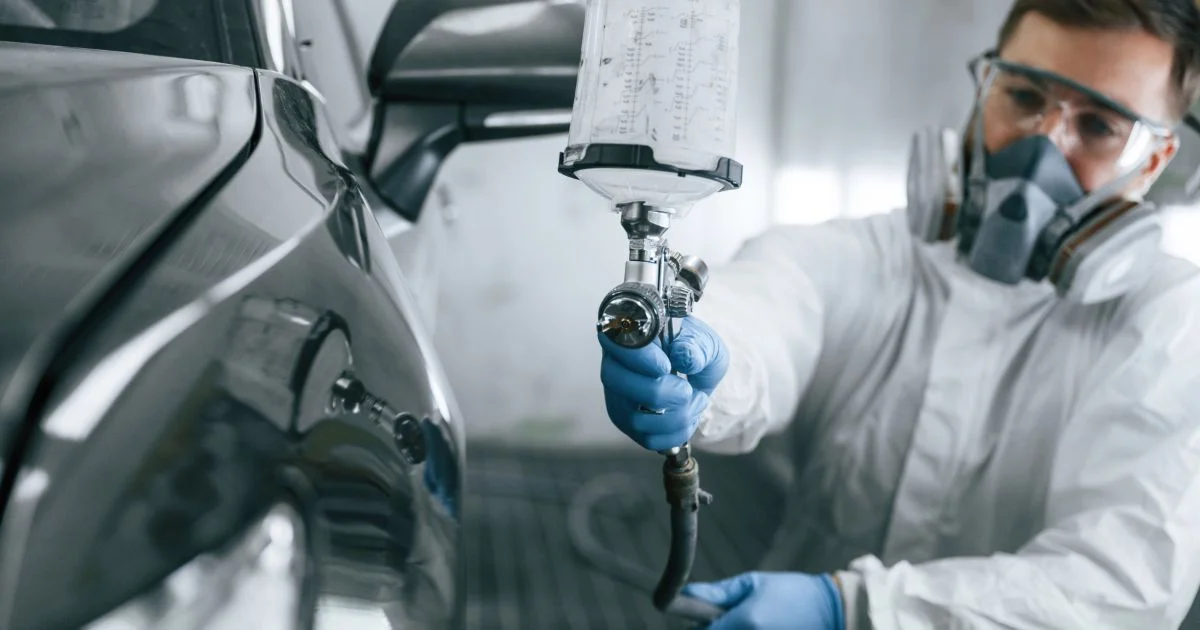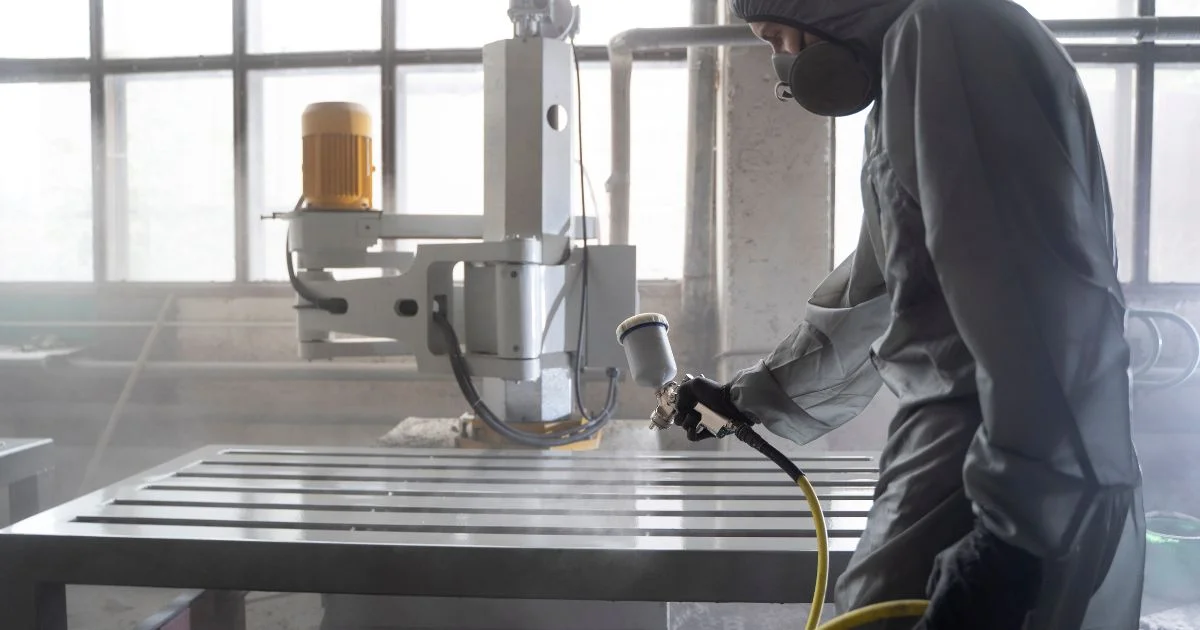
You've been there before. Your paint line is running smooth as silk. You've invested in top-tier equipment, sourced quality paints from trusted suppliers, and trained your team to operate with precision. Everything looks perfect on paper.
Then the phone starts ringing. Customers report peeling, bubbling, or flaking on parts that should have lasted for years. Suddenly, you're drowning in warranty claims, and your schedule is packed with rework instead of new orders.
We've seen this story play out in plants across North America. The surprising part is that the paint system usually isn't the culprit. The real failure point typically happens upstream: inadequate surface preparation. Without a truly clean surface, even the best coating systems are doomed to fail.
When manufacturers rush or skip this critical step, they put everything at risk – equipment, materials, labor, and reputation. Let's dig into why surface prep matters more than you might think, and how smart plants are rethinking their approach.
The Real Cost of Cutting Corners
When surface prep fails, the pain goes way beyond a bad paint job. The ripple effects hit your bottom line from multiple directions.
First comes the obvious waste. You're paying twice for materials – paint, powder, solvents – not to mention the labor hours spent stripping and recoating.
Your energy costs double with extra curing cycles. Meanwhile, your production schedule takes a hit as rework creates bottlenecks throughout your line.
The long-term damage cuts deeper. Those warranty claims that show up months later don't just cost money – they erode customer confidence. Rebuilding that trust takes time, resources, and sometimes uncomfortable price concessions to keep the business.
There's also the environmental angle. Each rework cycle generates additional VOC emissions and waste that needs proper disposal. In regions with strict regulations, repeated failures can trigger unwanted attention from environmental authorities.
What makes this particularly frustrating is that it's completely preventable. Time and again, we find that inadequate surface preparation is the number one cause of premature coating failure.
The Invisible Enemies of Adhesion
A truly clean surface isn't just free from visible dirt. Many coating-killing contaminants hide in plain sight, undetectable without specialized testing or lighting.
Sneaky Particulates
Dust, fibers, and leftover blast media form barriers between the surface and coating. Even tiny particles – we're talking barely visible to the naked eye – create weak points where moisture can sneak in and start the corrosion process.
Working with metal finishing operations, we constantly battle leftover blast media. These stubborn particles love hiding in recesses, weld seams, and corners. They pass visual inspections only to become failure points once coated.
Chemical Troublemakers
Machining oils, fingerprints, mold release agents – these invisible films block adhesion at the molecular level. This problem pops up frequently when parts move directly from machining to coating without proper cleaning.
Even the cleaners themselves can cause trouble. Water-based solutions, if not thoroughly rinsed and dried, leave behind residues that interfere with coating performance. You can't see these films, but they dramatically reduce surface tension and prevent proper coating wet-out.
Moisture Mischief
Water on the surface creates multiple headaches. It can react with the substrate, prevent coating from wetting properly, or evaporate during curing and leave voids behind. Parts might look bone-dry while still holding moisture in seams or porous areas.
In humid facilities, condensation forms on freshly cleaned parts within minutes. This makes timing between cleaning and coating absolutely critical – even a short delay can undo all your cleaning work.
Static Attraction
Static charges act like magnets for airborne particles, undoing your cleaning efforts before parts even reach the booth. This issue hits plastic and composite parts especially hard, as they can hold static charges for hours.
From our experience with paint lines across various industries, many plants don't realize how dramatically static affects contamination. Without addressing this invisible force, you'll keep fighting a losing battle against defects that seem random but are actually quite predictable.
Why Old-School Cleaning Falls Short
Many facilities still rely on manual wiping, compressed air, or basic vacuuming for surface prep. While these methods seem reasonable, each has serious limitations that can actually create more problems than they solve.
Manual wiping introduces inconsistency – pressure and technique vary between workers and shifts. Cloth fibers often get left behind, and cleaning agents might not get completely removed. This variability multiplies when dealing with complex part geometries.
Compressed air often contaminates rather than cleans. Oil and moisture from the compressor system transfer to your parts, and the high-velocity blast can actually drive dust deeper into surface pores. It's also one of your most expensive utilities, making it a costly solution for large-scale cleaning.
Basic vacuum systems work fine for loose debris but struggle with static-charged dust or particles with any staying power. They also have trouble reaching tight corners where contaminants love to hide.
The bigger issue is lack of process control. Without standardized procedures and measurable quality checks, your surface preparation results can swing wildly between shifts, directly impacting your coating quality and defect rates.
Engineering a Better Approach
Plants that consistently achieve high coating performance treat surface preparation as an engineered system. Rather than relying on a single method, they combine technologies to tackle all contamination types.
Air knives form the backbone of many effective systems. They create a continuous, high-velocity sheet of clean air that removes particles evenly across the surface. Unlike compressed air nozzles, they don't introduce oil or moisture, and they're far more energy-efficient.
For complete particulate removal, pairing air knives with dust collection systems captures contaminants at the source. This prevents dust from circulating through your facility and settling back onto freshly cleaned parts.
Static control systems are often the missing piece in surface prep. By neutralizing surface charges, they prevent dust from reattaching after cleaning – a critical step that many plants overlook.
When moisture becomes an issue, heated blow-off systems speed up drying and remove water from hidden areas. The temperature can be precisely controlled to protect sensitive substrates while ensuring complete drying.
The most effective systems integrate directly into production lines, ensuring every part reaches the booth in optimal condition without slowing throughput.
The most effective installations we've designed combine these technologies in a customized sequence based on your specific parts and contamination challenges. What works for cylindrical parts may not be ideal for flat surfaces or complex assemblies.
Through careful analysis of your process flow, part geometry, and coating requirements, we can identify the optimal combination of air knife positioning, static control placement, and filtration needs to create a truly effective system rather than just individual cleaning stations.
Every Industry Faces Unique Challenges

A surface prep solution that works perfectly in one facility might fall flat in another. Each manufacturing environment presents unique contamination challenges.
Automotive plants battle metallic particles from stamping and machining operations. These heavy contaminants often bond to surfaces through static charge, requiring targeted airflow combined with ionization for complete removal.
Plastic part manufacturers fight an ongoing war with static attraction that can actually intensify during certain cleaning methods. Without integrated static neutralization, dust returns within seconds after cleaning.
Aerospace operations maintain some of the most demanding cleanliness standards in manufacturing. Even microscopic particles can compromise coating performance and safety, so systems must provide full coverage of complex geometries with zero blind spots.
Part geometry plays a huge role too. Deep recesses, tight seams, and hidden cavities all need airflow patterns that can reach every surface with enough force to remove contaminants. This is where specialized engineering in airflow design makes a measurable difference in results.
Setting Standards for "Clean Enough"
You can't manage what you don't measure. Establishing quantifiable standards for surface cleanliness is essential for consistent coating quality.
Water break testing offers a quick way to spot oils or water-repelling contaminants. A truly clean surface allows water to sheet evenly, while contamination causes beading.
Dyne solution testing provides a numeric measurement of surface tension. Most coating manufacturers specify minimum surface tension for proper adhesion, and dyne testing verifies you've met this requirement before painting.
White light inspection reveals dust and fine particles that normal shop lighting misses. Combined with adhesion testing on sample parts, it gives you a complete picture of surface readiness.
Plants that implement formal cleanliness testing see measurable improvements in quality metrics. Through our installations across various industries, we consistently observe that facilities with documented testing protocols experience fewer warranty claims and significantly reduced rework compared to those relying on visual inspection alone.
Protecting Your Coating Investment
Your coating system can only perform as well as the surface it's applied to. No amount of premium paint, powder, or application technology can overcome inadequate surface preparation.
By treating pre-paint cleaning as an engineered process rather than an afterthought, you eliminate one of the most common causes of coating failure. The investment pays off through fewer rejects, reduced rework, lower operating costs, and stronger customer relationships.
If your plant is experiencing inconsistent paint quality, our team can assess your surface prep process and design a solution that integrates seamlessly into your existing line.
Ready to stop coating failures at the source? Contact us to learn how our air knives, static control systems, and heated blow-off solutions can transform your surface preparation process and protect your coating investment.

